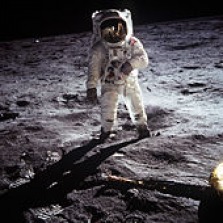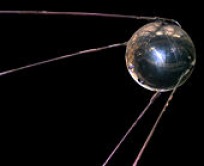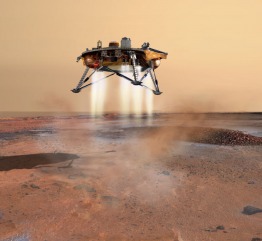Space Exploration

Space exploration is the use of astronomy and space technology to explore outer space.[1] Physical exploration of space is conducted both by human spaceflights and by robotic spacecraft.
While the observation of objects in space—known as astronomy—pre-dates reliable recorded history, it was the development of large liquid-fueled rocket engines during the early 20th century that allowed physical space exploration to become a reality. Common rationales for exploring space include advancing scientific research, uniting different nations, ensuring the future survival of humanity and developing military/strategic advantages against other countries. Various criticisms of Space Exploration are sometimes made, generally on cost or safety grounds.
Space exploration has often been used as a proxy competition for geopolitical rivalries such as the Cold War. The early era of space exploration was driven by a "Space Race" between the Soviet Union and the United States; the launch of the first man-made object to orbit the Earth, the USSR's Sputnik 1, on October 4, 1957, and the first Moon landing by the American Apollo 11 craft on July 20, 1969 are often taken as the boundaries for this initial period. The Soviet space program achieved many of the first milestones under Sergey Korolyov and Kerim Kerimov, including the first human spaceflight (Yuri Gagarin aboard Vostok 1) in 1961, the first spacewalk (by Aleksei Leonov) in 1965, and the launch of the first space station (Salyut 1) in 1971.
After the first 20 years of exploration, focus shifted from one-off flights to renewable hardware, such as the Space Shuttle program, and from competition to cooperation as with the International Space Station. From the 1990s onwards, private interests began promoting space tourism. Larger government programs have advocated manned missions to the Moon and possibly Mars sometime after 2010.
Sputnik 1

Sputnik 1 (Russian: "Спутник-1" Russian pronunciation: [ˈsputnʲɪk], "Satellite-1", ПС-1 (PS-1, i.e. "Простейший Спутник-1", or Elementary Satellite-1)) was the first artificial satellite to be put into outer space. Launched into geocentric orbit by the Soviet Union on 4 October1957, it was the first of a series of satellites collectively known as the Sputnik program.
The satellite helped to identify the density of high atmospheric layers through measurement of its orbital change and provided data on radio-signal distribution in the ionosphere. Because the satellite's body was filled with pressurized nitrogen, Sputnik 1 also provided the first opportunity for meteoroid detection, as a loss of internal pressure due to meteoroid penetration of the outer surface would have been evident in the temperature data sent back to Earth. The unanticipated announcement of Sputnik 1's success precipitated the Sputnik crisis in the United States and ignited the Space Race within the Cold War.
Sputnik-1 was set in motion during the International Geophysical Year from Site No.1 at the 5th Tyuratam range in Kazakh SSR (now at the Baikonur Cosmodrome). The satellite traveled at 29,000 kilometres (18,000 mi) per hour and emitted radio signals at 20.005 and 40.002 MHz[1] which were monitored by amateur radio operators throughout the world.[2] The signals continued for 22 days until the transmitter batteries ran out on 26 October1957.[3] Sputnik 1 burned up on 4 January1958 as it fell from orbit upon reentering Earth's atmosphere, after traveling about 60 million km (37 million miles) and spending 3 months in orbit.[4]
Pheonix Mars Lander

Phoenix is a robotic spacecraft on a space exploration mission on Mars under the Mars Scout Program. The scientists conducting the mission will use instruments aboard the Phoenix lander to search for environments suitable for microbiallife on Mars, and to research the history of water there. The multi-agency program is headed by the Lunar and Planetary Laboratory at the University of Arizona, under the direction of NASA'sJet Propulsion Laboratory. The program is a partnership of universities in the United States, Canada, Switzerland, the Philippines, Denmark, Germany, the United Kingdom, NASA, the Canadian Space Agency, the Finnish Meteorological Institute, Lockheed Martin Space Systems, and other aerospace companies.[1]
Phoenix is the sixth successful landing on Mars, out of twelve total international attempts (the sixth successful landing of seven American attempts). It is the third successful static lander and the first since Viking 2, and as of 2008 the most recent spacecraft to land successfully on Mars. It is also the first successful landing on a polar region of Mars.
For more information on the Phoenix Lander click Here.
